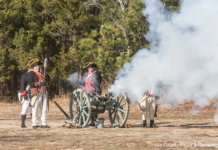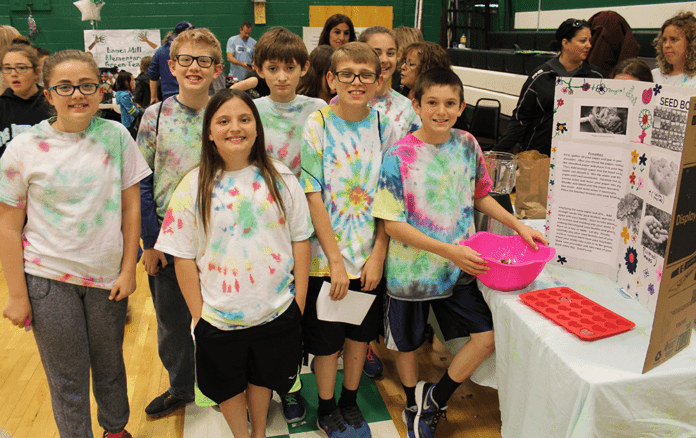
BRICK – It may have been gray outside but the color was clearly green inside the Brick Township High School on April 22. That seemed fitting as more than 500 people turned out there for the 7th annual Green Fair.
The free event showcased ways to make homes more green, better ways to grow vegetables and organic products, the importance of water conservation and how to save energy in your home.
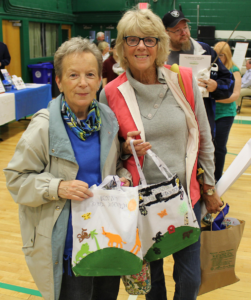
Joan Lorenzea came away with a bag full of giveaways and information about the township’s recycling program. “I am not a tree hugger but I was interested in learning more about recycling in the community.
“I was active with recycling efforts when I lived in Bergen County and I wanted to become more familiar with what was being done here in Brick,” Lorenzea said.
Lorenzea brought along her friend and fellow Brick resident Barbara Guzzi. Guzzi said that she moved to Brick three years ago and that she was excited about everything featured at the 15 vendor tables and organization booths. “I am especially impressed by what the school children have been doing and how involved they are.”
John Hyfantis, who serves as chairman of the township’s Green Team, which helped coordinate the fair, said that the addition of schools this year helped bolster attendance. “Last year we had about 500 people toward the end of the afternoon and we already had 400 people by 10:30 this morning and a little over 600 by 11:30. Attendance was tracked through the counting of free raffle tickets that were given out to everyone who entered the multi-purpose room where the event was held.
“This is the first time we’ve had the schools come in and showcase their green projects to the public,” Hyfantis said. Fair sponsors also included the township’s Sustainable Brick Committee, the Brick Environmental Commission and the Brick Township Recreation Department.
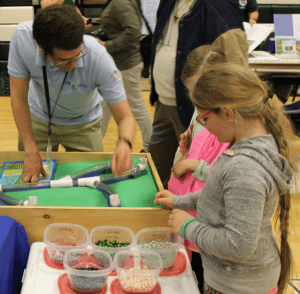
Jerri Bayles and Erin Sugru, both 5th grade teachers at the Herbertsville Elementary School, joined their students in promoting a compost program. Bayles said their school was the only one in Ocean County to have received a $2,000 state grant in association with NJ STEM (Science, Technology, Engineering, and Math) program. Creating your own compost can be achieved by layering organic materials such as garden clippings, dry leaves, kitchen vegetable scraps and egg shells and adding soil to create a mixture that turns into humus, which is the best soil builder around according to a tri-fold given out at the table.
Bayles said that the grant will go toward a classroom garden involving 28 students who will grow organic vegetables that can be provided to a local food bank. “We were here last year and we are glad to be back to provide awareness of what our students are doing, plus provide information about composting.”
Resident Kelly Ferullo brought her 4-year-old daughter Abby and 3-year-old son Steven to the event to introduce them to the importance of protecting the environment.
“I wanted my children to get a good message and have some fun. We picked up coloring books and seed pellets. They also got to see a mosquito under a microscope. That gave them a thrill. It was a good experience for them and I gathered some information on solar power from one of the booths,” Ferullo said.
Nick Grande of Brick had a different means of promoting green. He was providing samples from his business, Salad Master. “This is my third year and we try to teach people how to eat and cook healthy,” Grande said.
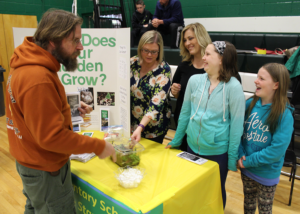
Gloribel Seeura came to the event to support her 10-year-old daughter Cecilia’s work with seed bombs. “I also came out to pick up some information on energy programs and the local Coast Guard Flotilla,” Seeura said.
Cecilia Seeura, a 5th grade student from the Emma Havens Young Elementary School explained that “seed bombs are made by putting shredded scraps of paper in a bowl with water.” Once the water is absorbed by the paper and the excess water is squeezed out, seeds are added into the mixture and pressed into a mold. After a few days it dries and the seed bombs are popped out of the mold. Then the seeds can be placed into a port or in the ground.

Brick Municipal Utilities Authority Watershed Technician Shari Kondrup was busy educating attendees about the area watershed. “Eighty percent of our water comes from the Metedeconk River Watershed and we try to stress the importance of water conservation.”
Fellow township MUA technician Anthony Morello was busy teaching adults and young people about the watershed through a model that involved plastic tubes and marbles that represented raindrops and other materials such as oil.
Kondrup, who heads education and outreach efforts for the Brick MUA said the Metedeconk River is a critical regional water supply and major tributary to the Barnegat Bay. The utility’s annual programs include a student poster program, a build your own rain barrel workshop, stream cleanups and exhibits at other Green Fairs.



